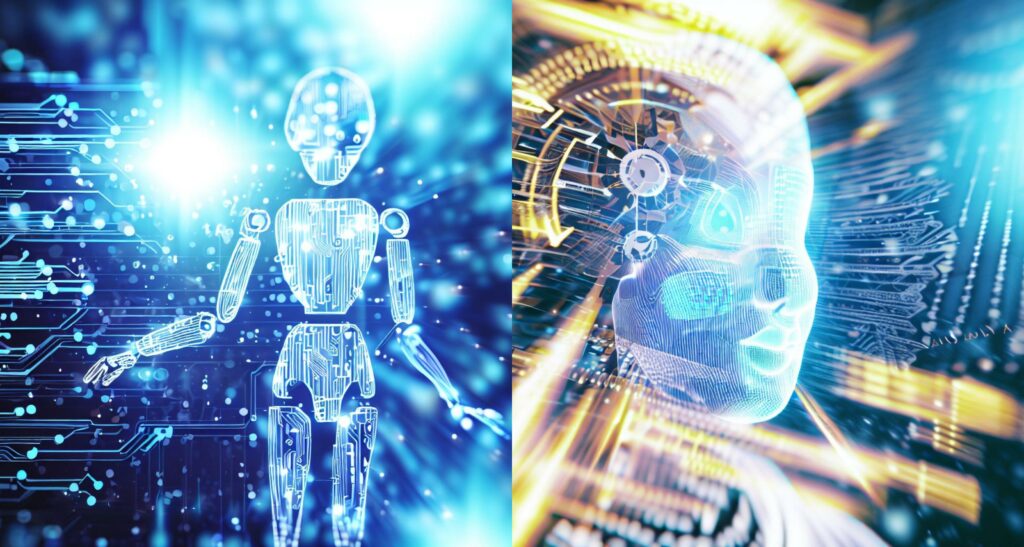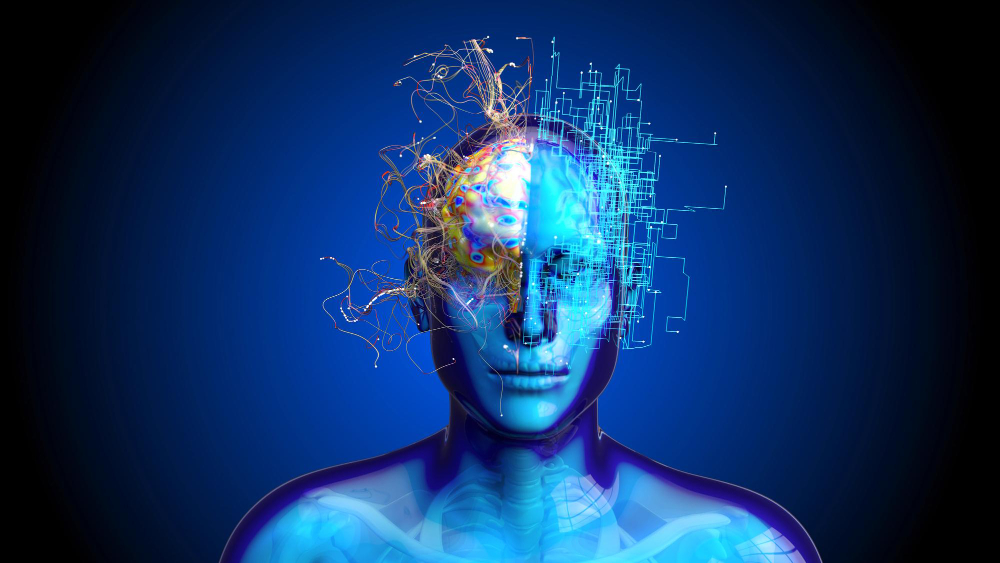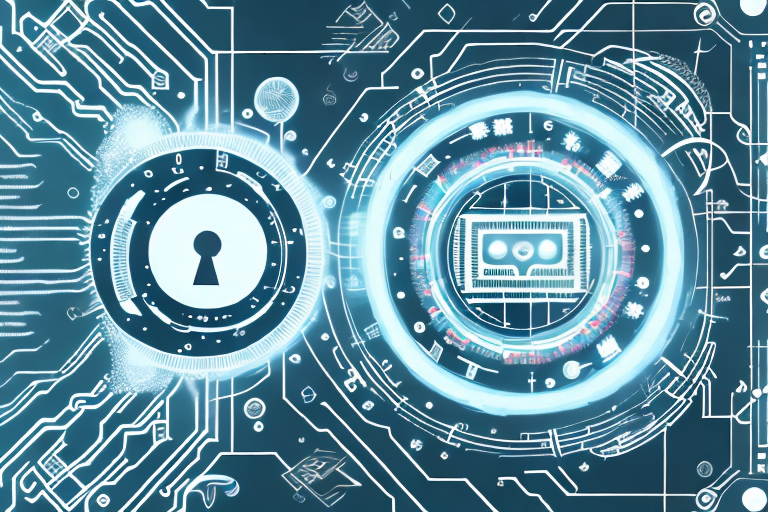Artificial intelligence has bloomed in 2023 and it has managed to capture the attention of every digital citizen. In the dynamic world of Artificial intelligence (AI), one technology stands out for its creative potential: generative AI. This groundbreaking field is revolutionizing content generation and storytelling, opening new doors for human-machine collaboration and sparking a wave of innovation across various industries. Generative AI has the potential to define the way of storytelling and content creation, making it an interesting tool.
In this blog post, we will explore the fascinating world of generative AI, its creative power, real-world applications, ethical considerations, and the limitless possibilities it holds for the future of content generation and storytelling.
The Creative Power of Generative AI
At its core, generative AI is a subset of artificial intelligence that focuses on creating content autonomously. Unlike traditional AI models, which primarily process and analyze data, generative AI is designed to produce new, original content. This is achieved through sophisticated neural networks and deep learning techniques that enable the AI to generate text, images, music, and more.
Generative AI models operate based on two fundamental principles. Firstly, to generate creative content, these models are trained on vast datasets of existing human-created content. Secondly, Generative AI models use probability and prediction to generate content. They analyze patterns in the data they’ve been trained on and predict the most likely next word, image, or note in a sequence. This probabilistic approach allows them to generate coherent and contextually relevant content.
One of the most captivating aspects of generative AI is its ability to generate creative content. These models have unlocked new levels of creativity, empowering content creators and designers with AI-powered tools that can generate compelling materials in a matter of seconds.
Generative AI models excel in creative content generation because they can mimic human language, style, and even artistic preferences. This flexibility makes it a versatile tool for content creators, marketers, and businesses.
Moreover, generative AI’s creative prowess extends to visual arts. Users can describe a scene or concept in words, and it brings to life the textual prompt in the form of a unique image. This technology has profound implications for graphic design, advertising, and creative storytelling.
Applications of Generative AI in Content Generation
Generative AI’s impact extends across various industries, and its applications are diverse and transformative.
1. Journalism:
In the fast-paced world of news reporting, generative AI can assist in generating news articles, summaries, and reports. For example, AI-powered bots can quickly summarize lengthy reports, allowing journalists to focus on analysis and investigative work. While AI can’t replace human journalists, it complements their efforts by automating routine tasks and increasing productivity.
2. Marketing:
The marketing world has embraced generative AI for content marketing and advertising. AI algorithms can automatically generate product descriptions, ad copy, and personalized recommendations based on user preferences and behavior. This personalized approach enhances customer engagement and drives sales. Additionally, AI can analyze consumer sentiment and trends in real-time, helping marketers refine their strategies for maximum impact.
3. Video Game Design:
The world of video game design has witnessed a revolution thanks to generative AI. AI algorithms can create complex game narratives, characters, and virtual worlds, saving time and resources for developers. Games can now offer dynamic, ever-changing experiences, adapting to players’ choices and preferences. This level of personalization enhances player immersion and enjoyment. Moreover, the integration of generative AI in video game design is not only enhancing gameplay experiences but also lowering entry barriers for indie developers and players too can explore worlds that truly respond to their unique choices and desires, making each gaming session an unforgettable adventure.
4. Film and Animation:
Generative AI is making waves in the entertainment industry by assisting in scriptwriting, character design, and scene creation. AI can analyze existing scripts and generate dialogue that fits the tone and style of a particular film or TV show. In animation, AI can automate the generation of background scenes and character animations, streamlining the production process and reducing costs. Additionally, the integration of generative AI in the film and animation industry is fostering a new era of creative storytelling, enabling filmmakers and animators to explore bold and innovative ideas, create captivating visuals, and deliver immersive narratives with greater efficiency.
5. Content Translation:
Generative AI models are breaking down language barriers by providing accurate and contextually relevant translations. They can translate content from one language to another while preserving the style and tone of the original text. This is invaluable for businesses seeking to expand their global reach and communicate effectively with international audiences.
6. Art and Music Creation:
Generative AI has ventured into the realms of art and music. AI algorithms can create unique pieces of visual art or generate music compositions based on predefined parameters. Artists and musicians use these tools for inspiration, experimenting with AI-generated content to explore new creative directions.
Enhancing Storytelling with Generative AI
Writers and storytellers are finding generative AI to be an invaluable ally in their creative endeavors. AI can provide inspiration by generating story prompts, plot ideas, and even entire storylines. Some authors are even experimenting with co-authoring books alongside AI models, blurring the lines between human and machine creativity.
Collaboration between humans and AI in storytelling is not limited to the writing process. AI-powered chatbots and virtual storytellers are engaging with audiences in innovative ways. For example, chatbots are used in interactive storytelling experiences, allowing readers to become part of the narrative by making choices that affect the storyline’s direction. Virtual storytellers, powered by AI, can dynamically adapt their narratives in response to user interactions, creating immersive and personalized storytelling experiences.
Collaborative storytelling with generative AI is not just about efficiency but also about pushing the boundaries of creativity. Writers are discovering that AI-generated prompts and ideas often lead to unexpected and inspiring directions, fostering a sense of co-creation that enriches the storytelling process.
Moreover, AI-powered chatbots are enabling authors to connect with their readers on a deeper level. These chatbots not only facilitate interactive storytelling but also gather valuable feedback and insights from the audience, helping authors tailor their narratives to the preferences and expectations of their readers.
As AI continues to advance, we can anticipate even more exciting developments in collaborative storytelling, where the line between human and machine creativity blurs further, giving rise to entirely new forms of narrative artistry.

Ethical Considerations of Generative AI
As with any powerful technology, generative AI raises ethical concerns that cannot be ignored. The risk of biased content generation is a significant issue. Generative AI models learn from the data they are trained on, and if this data contains biases or prejudices, the AI can inadvertently produce biased content. Developers and users must be vigilant in identifying and addressing bias in AI-generated content to ensure fairness and equity.
Additionally, there is the potential for plagiarism when AI generates content that closely resembles existing human-authored work. It is essential for content creators and organizations to verify the originality of AI-generated content and provide proper attribution when necessary.
The misuse of AI-generated content is another ethical concern. AI can be used to create fake news articles, and other deceptive content with potentially harmful consequences. There is a pressing need for regulations and safeguards to prevent the misuse of generative AI for malicious purposes.
Challenges and Limitations of Generative AI
Generative AI is not without its challenges and limitations. While these models can produce impressive content, they are not infallible.
1. Coherence and Context:
AI-generated content can sometimes lack coherence and context. While it may generate grammatically correct sentences, the content may not always make logical sense or fit the intended context. Improving the coherence of AI-generated content remains an ongoing challenge.
2. Training Data Requirements:
Generative AI models require extensive training on vast datasets to achieve desired results. This means that they perform best when they have access to a broad range of high-quality training data. Smaller datasets can result in less impressive outputs.
3. Resource Intensity:
Training and running generative AI models can be resource-intensive. It often requires powerful hardware, substantial computing resources, and energy consumption. This presents challenges in terms of accessibility and sustainability.
4. Customization and Fine-Tuning:
While generative AI models are versatile, fine-tuning them for specific tasks or styles can be a complex process. Organizations and developers often invest significant effort in adapting these models to their unique requirements.
Despite these challenges, researchers and developers are actively working to address them. Advancements in AI technology continue to push the boundaries of what generative AI can achieve.
Future Prospects of Generative AI
The future of generative AI is bright and promising. As technology continues to advance, we can expect even more impressive applications and innovations. Here are some future prospects and trends to consider:
1. Personalized Content Experiences:
Generative AI will enable the creation of highly personalized content experiences. Content, whether it’s news articles, advertisements, or entertainment, will be tailored to individual preferences and interests, enhancing user engagement and satisfaction. In this era of personalized content experiences driven by generative AI, users will not only consume content but actively participate in shaping it, contributing to a dynamic and interactive digital landscape that caters to their unique tastes and preferences, ultimately redefining the way we engage with information and entertainment.
2. AI-Driven Storytelling Companions:
AI-powered storytelling companions will become more sophisticated and interactive. These companions will not only tell stories but also adapt them in real-time based on user feedback and choices, providing dynamic and immersive narratives. As AI-driven storytelling companions continue to evolve, they will serve as more than just narrators; they will become immersive co-authors, responding to user input and emotions to craft narratives that feel alive, offering unprecedented levels of engagement and emotional connection between users and the stories they experience.
3. Enhanced Creativity Tools:
Generative AI will continue to evolve as a creative tool. Artists, writers, and musicians will have access to AI-powered tools that can generate ideas, provide suggestions, and assist in the creative process. These tools will act as collaborators, sparking new creative directions. Furthermore, as AI-powered creativity tools advance, they will bridge the gap between imagination and realization, helping artists and creators transform abstract concepts into tangible masterpieces with unprecedented speed and precision, pushing the boundaries of human creativity to new heights.
4. Generative AI in Education:
Generative AI will play a significant role in education. It can generate educational content, personalized tutoring, and even simulate historical events or scientific experiments for immersive learning experiences. Moreover, generative AI will revolutionize the way educators tailor their teaching materials to cater to diverse learning styles and individual student needs, creating a more inclusive and effective learning environment.
5. AI in Healthcare:
AI-generated content will have applications in healthcare, from generating patient reports to assisting in medical research. AI models can help healthcare professionals stay updated with the latest research and treatment protocols. Additionally, AI in healthcare holds the potential to enhance diagnostic accuracy and streamline administrative tasks, allowing medical practitioners to focus more on patient care and less on paperwork and data management.
6. Generative AI in Language Translation:
Language translation will become more accurate and nuanced, breaking down language barriers and fostering global communication and understanding. Furthermore, AI-driven translation tools will empower individuals and businesses to engage in seamless multilingual communication, opening up new opportunities in international markets and cross-cultural exchanges.

Conclusion
Generative AI marks a new era in content generation and storytelling. Its creative power is reshaping industries and inspiring new ways of collaboration between humans and machines. However, ethical considerations and technical challenges must be addressed as we navigate this exciting frontier. With responsible development and ethical usage, it is poised to shape the future of content creation and storytelling, opening up a world of creative possibilities that were once unimaginable. As we continue this incredible journey into the future of generative AI, it’s imperative that we maintain a balance between technological innovation and ethical responsibility, ensuring that the creative potential of this transformative technology benefits humanity as a whole. The journey has only just begun, and the future is filled with boundless opportunities for those willing to explore the creative potential of generative AI.



